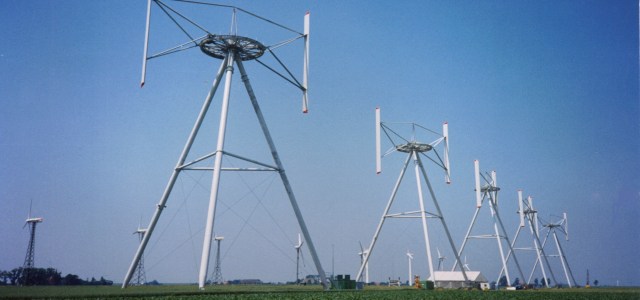On this blog, we usually concentrate on the policies and daily politics of Germany’s Energiewende. Saliem Fakir takes a step back and explains the requirements and the process of low carbon transitions – and what this means for South Africa.

From niche to mainstream – German Windenergiepark Westküste in 1985. (Photo by Heidelberg GmbH, CC BY-SA 3.0)
The term transition has come to be used in different ways in recent years: describing a systems innovations approach that involves new technologies displacing old technology. Or a more ambitious goal of socio-ecological conversion, wherein transitions occur between different societal energy regimes, ways of organizing society and living alternative social values.
Given that there is little historical experience with low carbon transitions (LCTs), the transition must be based on learning by doing. How such a transition might unfold in South Africa could be gleaned from the different energy transition approaches taken by countries, such as Germany, China, Japan and South Korea. The systems innovations transition approach suggests that a transition will involve mainstreaming of new technologies over old ones with concomitant changes in markets, user practices, shifts in policy, laws, cultural discourses as well as the development of new governing institutions.
Moreover, the eruption of new technologies will inevitably encounter resistance because they threaten the existing order, paradigm and profitability of those who are locked into an existing techno-economic system or paradigm, particularly utilities.
New technologies may at first succeed only if they can pragmatically ‘add on’ to the incumbent system, i.e. if they are compatible with the system’s dominating features. Other factors such as cost, social barriers and enabling infrastructure may hinder wider use or scaling of these techno-economic shifts. Existing systems also have their own political economy that cannot be dismissed as they determine the pace at which transformation can occur.
The systems innovation approach would suggests that the LCT will be possible not from the transformation of a single technology or product but from redesigning entire systems and provisions. This is exactly what we are currently witnessing with the German energy transition, which is entering its decisive second phase.
The first phase was simply intended to allow for rapid market access of new renewable energies, the second phase will be a more complicated one. It aims to address those systemic changes necessary for a true energy transition, such as aspects related to infrastructure and market mechanisms. Germany’s ambition is being watched by everybody in the world.
It is widely believed that Germany has the technical and financial resources to embark on an energy transition or Energiewende that is beneficial to other countries because such a transformation would be done on scale, achieve new technological improvements and hopefully also bring down costs of these new technologies.
In other words, it will require radical systemic changes that encompass technological changes including designs, technologies and infrastructure; industrial changes encompassing value chains, standards and intellectual property; policy changes and social changes, behaviour, preferences and attitudes. It draws on from the tradition of ecology for its inspiration.
The socio-ecological conversion perspective to a transition suggests that what is changing under such a transition is not just the source of energy and technologies, but many other features of society will have to change as well: the economy, the stakeholders, the demography, and social relations.
While much of my commentary here was focused on the first approach – the techno-economic shift, the cultural change model of the transition idea cannot be ignored nor dismissed, even though it will take longer time and may need to happen in parallel with pure technology focused change.
By Saliem Fakir, Head of the Living Planet Unit at the World Wildlife Fund South Africa. The Unit’s work is focused on identifying ways to manage a transition to a low-carbon economy.